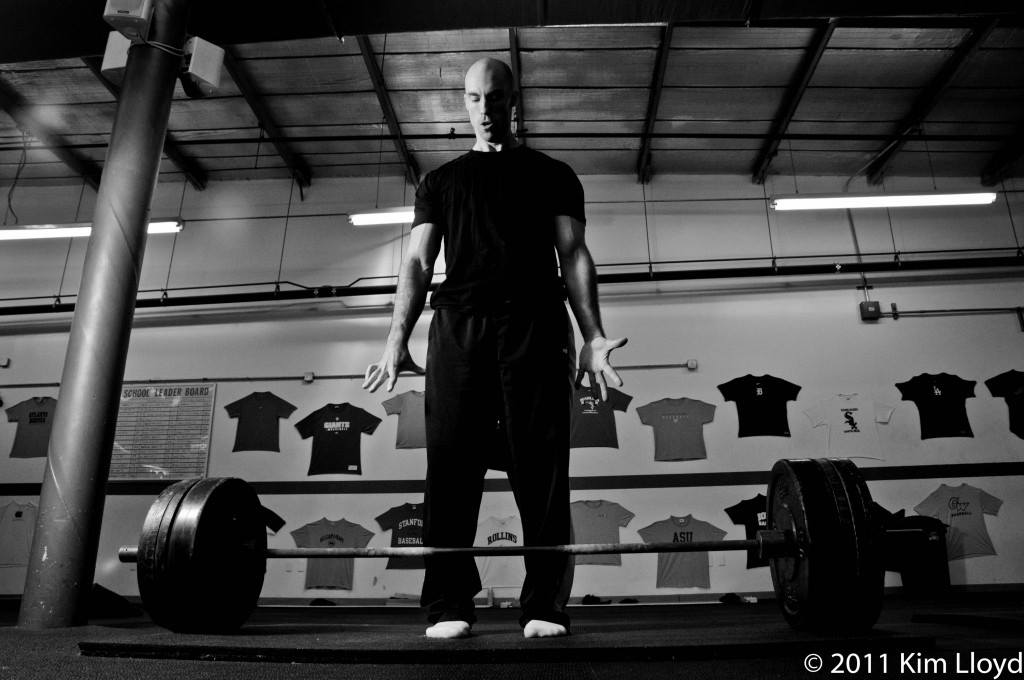Two weekends ago I had the opportunity to make a cameo at John Rusin’s Pain-Free Performance Specialist course that was held at AMP Fitness here in Boston.
My good friend – and currently #7 on my list of Top 10 man crushes – David Otey was in town to teach the course.
It was lovely to spend time with my friend whom I hadn’t seen in several months. But too, after an equal gap in absence, it was downright biblical to finally be amongst a group of fitness professionals in a learning environment. I didn’t realize how much I missed in-person continuing education until I was marinating in it for a few hours.
I took home a bounty of insights and ideas in the few hours I was there, however there was one analogy in particular David used that really resonated with me

Do Not Cross Doesn’t Really Mean You Can’t Cross: Fitness in a Nutshell
Anyone who lives in a large city is familiar with the throng of “Do Not Cross” signs peppering the sidewalks and streets.
Pedestrian life is controlled by their never-ending playlist counting down when it’s safe to cross a street and when it’s not.
They’re there for a reason; for our safety and the public good.
Not surprisingly, most people ignore them and cross the street anyway.1
And 99.9999% of the time…it’s fine. We survive. Not a scratch.
…but your head better be on swivel.
The same theme applies to lifting weights. As David noted during his talk on squat assessment and squat technique, people can back squat with a straight bar (often considered at the top of the pyramid in terms of most advanced squat variations), but it only takes that one time using too much load or being too overzealous where something goes awry.
Likewise, think about the conventional deadlift.

I’d argue the conventional deadlift – particularly when performed from the floor – is the most advanced variation of deadlift one can perform:
- Axis of rotation is further away from the barbell.
- More shear load on the spine.
- More likely your soul will leave your body.
It requires a fair amount of mobility (access to requisite hip flexion, thoracic extension, ankle dorsiflexion) as well as picking the right parents (short torso, long arms) to be able to get into and maintain the proper spine position to perform safely.
NOTE: I believe Dr. Stuart McGill has noted in his research that something like 93% of the people he’s assessed during his career could not perform a conventional deadlift from the floor without compensating through their lumbar spine in some fashion (I.e., loaded spinal flexion).
NOTE II: Maybe it’s 91%. No, wait, 87%. Either way, it’s a lot…;o)
All of this to say: Yes, back squatting is fine. As are conventional deadlifts. But they’re both examples where the bulk of trainees are crossing the street when the “do not cross” sign is flashing.
Most can do them.
And most will probably be fine.
However, this is why it’s imperative to assess your clients/athletes and be more cognizant of “fitting” any program to THEM – and their injury history, their goals, their ability level, and yes, their anthropometry – rather than the other way around.
We can vastly reduce the risk of injury with most trainees by utilizing safer alternatives that tend to be a better fit across the board anyway – like the Trap Bar Deadlift, Front Squat, or even a SSB Bar Squat.
It’s still squatting and deadlifting…
…you’re just, you know, less likely to be taken out by a moped.


